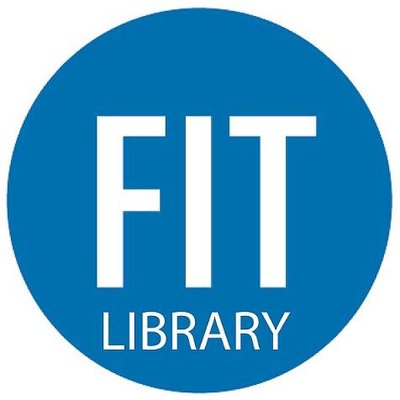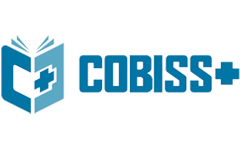A Study on Factors Affecting Career Advancement in Organization at Klang Valley
DOI:
https://doi.org/10.61841/9y8kr773Keywords:
Immediate supervisor, colleague, professionalism, career management skills, proactive career management and career advancement.Abstract
Career advancement is seen as a tool for organisation to match employees’ career aspiration to the organisations’ goal and objective in order to maintain satisfaction and commitment. The aim of this study is to determine factors influencing career advancement in organization at Klang Valley. Questionnaire examining the relationship between the dependent such as career advancement and independent variable such as relationship between immediate supervisor, colleague, professionalism, career management skills, proactive career management. A total of 160 responses were obtain from employees in Klang Valley. The results revealed that the variables had a significant impact on career advancement.
Downloads
References
1. Abdesabour, F. &Ravand, M. (2013) Investigating and prioritizing factors affecting on Human Resource Management Professionalism in Tehran Regional Electric Co. International Journal of Management Academy. 1(2). pp. 78-90.
2. Ariani, D. (2015) Relationship with Supervisor and Co-Workers, Psychological Condition and Employee Engagement in the Workplace. Journal of Business and Management, 4(3). pp. 34-47.
3. Auer Antoncic, J. &Antoncic, B. (2011) Employee satisfaction, intrapreneurship and firm growth: a model. IndustrMngmnt& Data Systems. 111(4), pp. 589-607. http://dx.doi.org/10.1108/02635571111133560
4. Bahare, G., Negar, M., Nouredin, B., Aliyu, I.C., Ahmed, U. A. & Roya, A. (2015) The Role of HR Managers: A Conceptual Framework. Asian Social Science. 11(9). pp. 118-124.
5. Bandar, N. F. A., Nyuk-Ping Ling, Farida Abdul Halim @ Alil& Agatha Lamentan Muda, 2017. Proactive Behaviour as a Mediator in the Relationship between Quality of Work Life and Career Success. International Journal of Business and Society, 18(4), pp. 701-709.
6. Basford, T. E. &Offermann, L. R. (2012) Beyond leadership: The impact of coworker relationships on employee motivation and intent to stay. Journal of Management and Organization. 18(6). pp. 807-817.
7. Chin, W.S. &Rasdi, R.M. (2014) Protean Career Development: Exploring the Individuals, Organizational and Job-related Factors. Asian Social Science. 10(21). pp. 203-215
8. Choi, Y. (2015) Career Success Factors of Women in the Public Sector: An Empirical Analysis of the Korean Central Government. Asian Social Science. 11(9). pp. 300-311.
9. Dorothea, W. (2015) Relationship with Supervisor and Co-Workers, Psychological Condition and Employee Engagement in the Workplace. Journal of Business and Management. 4(3). pp. 34-47.
10. Fathi, M.A.AL.D, Kamal, A.H. &Khairi, M.O. (2015) Human Resource Management Practices on Human Resource Outcomes in Libyan Firms: Empirical Evidence. Asian Social Science. 11(23). pp. 51-5
11. Finch, D.F., Hamilton, L.K., Riley, B. &Zehner, M. (2013) An exploratory study of factors affecting undergraduate employability. Education + Training. 55(7). pp. 681-70.
12. Kahirol, M.S. & Nor, L.S. (2015) Technical Skills Evaluation Based on Competency Model for Human
Resources Development in Technical and Vocational Education. Asian Social Science. 11(6). pp. 74-79.
13. Kantabutra, S. &Rungruang, P. (2013) Perceived visionbased leadership effects on staff satisfaction and
commitment at a Thai energy provider. Asia-Pacific Journal Of Business Administration. 5(2). pp. 157-178.
http://dx.doi.org/10.1108/17574321311321621
14. Khaled, M.A-S. (2017) Career Path Development and its Impact on Organizational Citizenship Behavior in
Greater Amman Municipality. International Journal of Business and Management. 12(3). pp. 79-93.
15. Li, M. &. Su. Y. (2014) Coworker’s relation influence on individual job performance: A contextuanzing
research. Journal of Chemical and Pharmaceutical Research. 6(5), pp. 1986-1993.
16. Ling, N. P., Nur Fatihah Abdullah Bandar, Alil, F. A. H. & Agatha Lamentan Muda, 2017. Proactive behaviour
as a mediator in the relationship between quality of work life and career success. International Journal of
Business and Society, 18(S4), pp. 701-709.
17. Long, C.S, Ismail, W.K.W. & Amin, S.M. (2013) The role of change agent as mediator in the relationship
between HR competencies and organizational performance. International Journal of Human Resource
Management, 24(10). pp. 2019-2033.
18. Maden, C., Ozcelik, H. &Karacay, G. (2016). Exploring employees’ responses to unmet job
expectations.Personnel Review. 45(1). pp. 4-28. http://dx.doi.org/10.1108/pr-07-2014-0156
19. Madlock, P. E. & Booth-Butterfield, M. (2012). The influence of relational maintenance strategies among
coworkers. International Journal of Business Communication. 49(1). pp. 21-47.
20. Meijerink, J. (2014) Practicing Social Innovation: Enactment of the Employee– Organization Relationship by
Employees. Human Resource Management, Social Innovation And Technology. pp. 135-153.
http://dx.doi.org/10.1108/s1877-636120140000014014
21. Mustafa, M., 2013. High School Teacher Professionalism in Enhancing the Quality of Teaching and Learning.
Asian Social Science, 9(12), pp. 168-175.
22. Neary, S., Dodd, V. & Hooley, T. (2015) Understanding Career Management Skills: Findings From the First
Phase of the CMS Leader Project. Derby: International Centre for Guidance Studies, University of Derby.
23. Nunally, J.C. (1981). Psycholometric Theory. New Delhi: Tata McGraw-Hill Publishing Company Ltd.
24. Osibanjo, A.O., Oyewunmi, A.E. &Ojo, S.I. (2014) Career Development as a Determinant of Organizational
Growth: Modelling the Relationship between these Constructs in the Nigerian Banking Industry. American
International Journal of Social Science. 3(7). pp. 67-76.
25. Posholi, M. (2012) An Examination Of Factors Affecting Career Advancement Of Women Into Senior
Positions In Selected Parastatals In Lesotho. Cape Peninsula University Of Technology.
26. Rahim, N. B. & Siti-Rohaida M.Z., 2016. The Influence of Proactive Career Behaviours on Psychological Wellbeing among Malaysian Engineers. Global Business Review, 17(3_suppl), pp. 30S-44S.
27. Robert, H., Tomas, C-P. & Robert, B.K. (2013) Employability and career success: Bridging the gap between
theory and reality. Industrial and Organizational Psychology. 6. pp. 3-16. http://dx.doi.org/10.1111/iops.12001
28. Rothmann, S. & Welsh, C. (2013) Employee engagement: The role of psychological conditions. Management
Dynamics. 22(1). pp. 14-25.
29. Sami, A.K, James, R. & Ahmed, A.A, (2015) Organizational Career Development Practices: Learning from an
Omani Company. International Journal of Business and Management. 10(9). pp. 88-98.
30. Saraih, U. N., Hassan Ali & Shaiful Annuar Khalid, 2015. The Development of Teachers’ Career in Relationship to OCB and Justice: A Study in Malaysia. Asian Social Science, 11(24).
31. Saraih, U.N., Nordin, K., Abashah, A., Radzi, W.N.W.M. & Razali, R. (2015) Modeling Employees’ Career in Relation to Self and Superior Ratings of Job Performance. Asian Social Science. 11(28). pp. 303-311
32. Smith, C., Ferns, S. & Russell, L. (2014). Conceptualising and measuring ‘employability’ – lessons from a National OLT Project. Gold Coast, Australian Collaborative Education Network Limited. pp. 1-10.
33. Suriyankietkaew, S. & C. Avery, G. (2014) Employee satisfaction and sustainable leadership practices in Thai SMEs. Journal Of Global Responsibility. 5(1). pp. 160-173. http://dx.doi.org/10.1108/jgr-02-2014-0003
34. Tianan Yang, Yu-Ming Shen, Mingjing Zhu, Yuanling Liu, Jianwei Deng, Qian Chen, Lai Chu (2016) Effects of Co-Worker and Supervisor Support on Job Stress and Presenteeism in an Aging Workforce: A Structural Equation Modelling Approach. International Journal of Environmental Research and Public Health. 13(72). pp.1-15.
35. Tremblay, M., Dahan, J. &Gianecchini, M. (2014) The mediating influence of career success in relationship between career mobility criteria, career anchors and satisfaction with organization. Personnel Review. 43(6). pp. 818-844. http://dx.doi.org/10.1108/PR-08-2012-0138.
36. Ulrich, D., Brockbank, W. & Ulrich, M. (2010) Capturing the Credible Activist to Improve the Performance of HR Professionals. People and Strategy. 33(2). pp. 22-30.
37. Wesarat, P-O., Sharif, M.Y. & Majid, A.H. (2014) A Review of Organizational and Individual Career Management: A Dual Perspective. International Journal of Human Resource Studies. 4(1). pp. 2162-3058.
38. Widhiarso, Wahyu. 2010. Catatan Pada Uji LinearitasHubungan. Yogyakarta: FakultasPsikologi UGM.
39. Wok, S. & Hashim, J. (2013) Communicating and sharing working relationships with older employees.JCOM. 17(2). pp. 100-121. http://dx.doi.org/10.1108/13632541311318729
40. Xu, A. & Ye, L. (2014) Impacts of Teachers’ Competency on Job Performance in Research Universities with Industry Characteristics: Taking Academic Atmosphere as Moderator. Journal of Industrial Engineering and Management. 7(5). pp. 1283-1292.
41. Knuppel, B. (2015, March 16). Career development versus career advancement: Leaders need to understand both. Retrieved from Smartbrief: http://www.smartbrief.com/original/2015/03/career-development-vs-careeradvancement-leaders-need-understand-both
Downloads
Published
Issue
Section
License
Copyright (c) 2020 AUTHOR

This work is licensed under a Creative Commons Attribution 4.0 International License.
You are free to:
- Share — copy and redistribute the material in any medium or format for any purpose, even commercially.
- Adapt — remix, transform, and build upon the material for any purpose, even commercially.
- The licensor cannot revoke these freedoms as long as you follow the license terms.
Under the following terms:
- Attribution — You must give appropriate credit , provide a link to the license, and indicate if changes were made . You may do so in any reasonable manner, but not in any way that suggests the licensor endorses you or your use.
- No additional restrictions — You may not apply legal terms or technological measures that legally restrict others from doing anything the license permits.
Notices:
You do not have to comply with the license for elements of the material in the public domain or where your use is permitted by an applicable exception or limitation .
No warranties are given. The license may not give you all of the permissions necessary for your intended use. For example, other rights such as publicity, privacy, or moral rights may limit how you use the material.
















